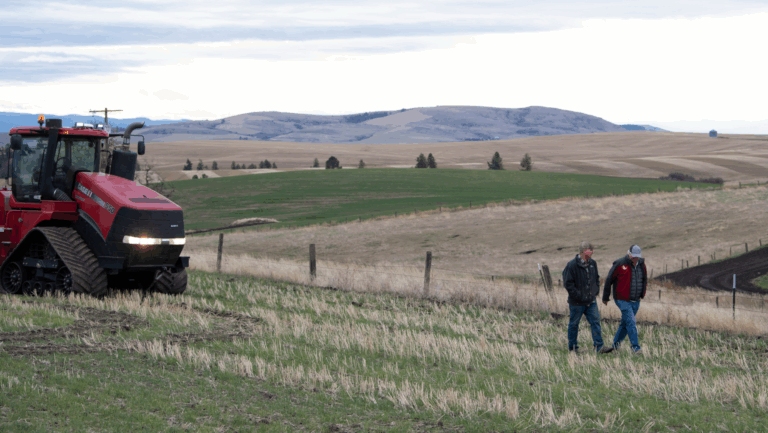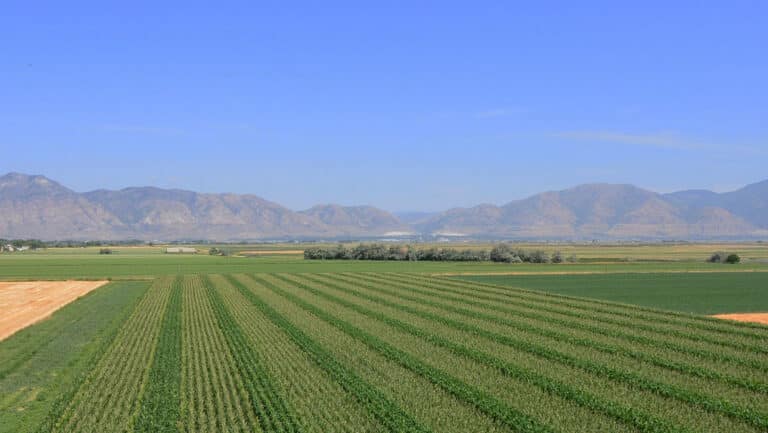The Economic Future of California Agriculture
California farmers and ranchers stand as leaders in global food production and crucial contributors to the future of agriculture.
California agriculture leads the U.S. in the production of several diverse commodities, ranking as the top state for agricultural cash receipts in 2020. Farming in California yields many benefits—and its economic impact attests to this. With at least five major micro-climates and leading the way in ag technology innovation, California provides a host of benefits to those that steward its diverse landscapes. Despite inevitable challenges, California farmers and ranchers remain resilient and dedicated to providing for a growing population. The future of agriculture in California will depend on the industry’s ability to navigate drought, agricultural legislation, farm labor costs, and trade.
Follow along as we share insights from AgAmerica’s Senior Director of Partner Relations and commodity expert Curt Covington on California agriculture and his predictions for the future of California farms and ranches.
California Agriculture Facts
California is an agricultural powerhouse. According to the USDA, California had 69,600 farms and ranches in 2020. California agriculture positively impacts the state and national economy, communities, and the planet. The contributions of California farmers and ranchers attest to the importance of California farms on both a national and global scale.
The Economic Impact of California Farmers and Ranchers
As the top dairy and wine producer in the U.S, California agriculture has a significant economic impact in both our nation and the state. The economic impact of California agriculture includes:
- In 2020, its agricultural cash receipts totaled almost $55 billion—more than 12 percent of total U.S. agricultural cash receipts.
- In 2019, California’s agricultural exports totaled nearly $22 billion.
- Over one-third of U.S. vegetables and two-thirds of U.S. fruit and nuts are grown in California.
- In 2019, California dairy farmers produced 19 percent of our nation’s dairy supply.
California Commodities
California is one of only five agricultural regions in the world with a Mediterranean growing climate—enabling California farmers to grow a vast array of commodities. With over 400 commodities produced in the state, California agriculture holds immense diversity, leading the world in the production of the following commodities:
- Almonds;
- Apricots;
- Dates;
- Figs;
- Kiwi fruit;
- Nectarines; and
- Olives.
Furthermore, in the U.S., California agriculture leads in the production of these commodities:
- Avocados;
- Grapes;
- Lemons;
- Melons;
- Peaches;
- Plums; and
- Strawberries.
Without the essential contributions of California farms, some of our favorite commodities may not be as accessible throughout the year as they are today.
Top 10 California Commodities
The top 10 valued commodities for the 2020 crop year consist of a diverse array of commodities.
The diversity within California agriculture means that each of its farms and ranches has different challenges and needs. As a result, the solutions to their challenges vary. When planning your next step forward on your California farm operation, it’s important to find a lender who understands regional differences that affect your operation.
California Farmland Values
Another testament to the value of investing in California agriculture is the nine percent increase in California farmland values from 2020 to 2021. According to Curt Covington, this is due to historically low interest rates, generally favorable commodity prices, and a declining amount of high-quality ground.
Four Challenges Facing California Agriculture
Despite the economic profitability of California agriculture, the state’s farmers and ranchers are dealing with increasing challenges to operational success and longevity. Fortunately, there are ways for them to voice their opinions and make a difference—and rural representation is key. By ensuring that the needs of farmers and ranchers are heard, legislation that places excessive burdens on California farmers and ranchers can be mitigated. To accomplish this, narrowing the gap in knowledge through agricultural advocacy and education is key.
According to Curt Covington, as a result of these challenges, California farm income was down in 2020 due to ongoing drought conditions, a strict regulatory environment, higher costs and shortages, and export dependency.
1. California Drought
Due to its dry climate, the California ag sector is significantly impacted by drought. According to the National Integrated Drought Information System, 37.2 million people in California are affected by drought with 58 counties obtaining USDA disaster designations. California has been experiencing severe drought conditions since 2020—and the past two years have been the driest in California’s statewide precipitation record. Precipitation in 2021 was about 44 percent of the average. In fact, it would take 140 percent of California’s yearly rainfall for the state to recover from their current drought.
Severe drought has also led to an increase in wildfire risk for California farm operations. Despite these challenges, California farmers have become more efficient in their use of water. However, increased regulations limiting water use make food production for a growing population in California an ongoing challenge. As California farmers and ranchers look forward, it will be important for farm legislation to integrate their needs to ensure that they can continue producing food on a large scale.
2. Regulatory Environment
Despite the essential contributions of California agriculture, common misconceptions created from a lack of agricultural knowledge often impact ag legislation in California. As a result, strict regulations on things like food safety, water, air quality, and labor often increase the cost of farming. Perhaps most notably, the Sustainable Groundwater Management Act places more regulations on California farmers surrounding their water usage. While the purpose of this legislation is to protect California’s groundwater, it limits groundwater pumping while also requiring measurement and reporting of groundwater usage. The legislation states that all basins must achieve sustainability by 2024 but does not offer financial support to make it happen. As a result, California farmers face greater difficulty in acquiring one of the most essential inputs—water.
A growing interest in ESG investments and policies is placing additional pressure on California farmers and ranchers to optimize their operations. While this change can be positive, it is important for legislation to be structured in a way that supports their efforts rather than blocking farmer innovation.
3. Labor Costs and Shortages
In conjunction with other segments of the agriculture industry, California farmers are faced with increasing labor costs and shortages. In fact, 70 to 80 percent of variable costs for farmers are comprised of labor costs. In addition, the minimum wage in California increased to $15 per hour in 2022 along with a decrease in the maximum hours worked per week at a regular rate.
Higher labor costs make it difficult for California farmers to compete in the global market. The higher cost of labor combined with growing farm labor shortages makes advancements in automation and precision ag technology an important part of the future of California agriculture.
4. Export Dependency
Due to its large proportion of exports, the California agricultural sector is export dependent. For instance, over 70 percent of almonds are exported internationally. California’s top exports include almonds, pistachios, dairy and dairy products, wine, and walnuts. This export dependency poses potential risks including:
- Risk of inflation;
- Increase in global competition;
- Risk of market concentration; and
- Foreign-owned shipping lines.
This export dependency highlights the need for a diverse selection of free trade agreements that secure strong export demand for the California agricultural community.
Empowering a Bright and Sustainable Future for California Agriculture
To address the challenges faced by California farmers and ranchers, Curt says that agricultural legislation needs to consider their needs and support them in their efforts to feed the state, nation, and world.
“Rural communities need a larger voice in legislative affairs.”
Curt Covington, Senior Director of Partner Relations
In addition to farmer-focused legislation, financing that empowers farmers to optimize their operation is essential. AgAmerica’s flexible loan spectrum gives California farmers the freedom to elevate their operations despite the uncontrollable challenges they face.
Transform challenges into opportunities with AgAmerica’s revolutionary approach to agricultural financing.






